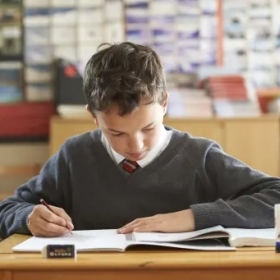An Individualised Approach to Learning
Published by Newland House School on Thursday 1st of December 2022
Now that we are enjoying a more stable school environment once more, differentiating children’s learning experiences in school has never been more important. By offering activities relevant to their ability and needs we can help to make sure that children make good progress or in some cases, help them to catch up on learning that has been missed over recent times.
Most children have experienced a fragmented education since the spring of 2020 with windows of home learning and pockets of class or individual isolation, and whilst there have been some long stretches of in-school education these have been set against unnatural in-school distancing requirements. We believe that our Home Learning Programme, which we carefully adjusted and refined during the periods of lockdown was as comprehensive as possible but nonetheless, differentiation was not as easy to disseminate and we know that some children were able to make better progress than others during this time. Solitary and visual learners adapted readily to online learning because it suited their learning style. Some children also made good progress, especially those where pressed parents were able to dedicate time to closely support them but children who were social, auditory or verbal learners may have found it much harder to adapt.
As a consequence, our Recovery Curriculum was vital in not only helping children to reintegrate back into the classroom but also in establishing the progress each child had made and now that we are enjoying a more stable school environment once more, differentiating children’s learning experiences in school has never been more important. Differentiation is now a well-known and established tool for adjusting the method of teaching to recognise the learning style and ability of the leaner. Effective differentiation comes in many forms and thinking carefully about how to cater for the individual needs within a class is one of the challenges but also the rewards of being a teacher.
Often the most effective differentiation does not require producing a number of progressively demanding versions of in-class activities, but rather tweaking the way a task is presented to create the required level of complexity. To give an example, in Maths, asking a child who has easily discovered the patterns behind different number sequences to look at a series of new examples and try to define the commonalities between them, is likely to challenge them more than simply providing additional sequences to solve when this is something that they have already mastered. Furthermore, when questioning children orally, or when offering a ‘challenge’ question, carefully considering as to how this is phrased will change the way that pupils approach this. Bloom’s Taxonomy classifies educational learning objectives through a hierarchical model which illustrates this approach well and despite being a relatively old concept, it is still relevant today.
Giving children questions that allow them the chance to evaluate or synthesise their understanding of a concept, rather than ones that simply require them to display their knowledge or understanding of the subject, may only require a relatively simple tweak to achieve, but can then offer children a sense of challenge and excitement. Asking a child to describe a leopard’s skin and then asking them why they have these patterns are valuable questions in their own right, but changing the question to ask a child to come up with examples of animals whose skin has adapted to help them to survive, or asking them to categorise a group of animals according to their types of adaptations, would require higher order thinking whilst retaining the same lesson objective. This type of change would require little in the way of extra resources and only a small amount of extra time during the lesson planning process.
To avoid artificial glass ceilings being created, all differentiated work or questioning must be available to all pupils. There is a danger in setting or streaming that a teacher may inadvertently makes assumptions about how a particular child will react or respond in advance of them being a given a chance to engage with a task. By offering activities relevant to their ability and needs we can help to make sure that children make good progress or in some cases, help them to catch up on learning that has been missed over recent times.
Chris Skelton
Head






